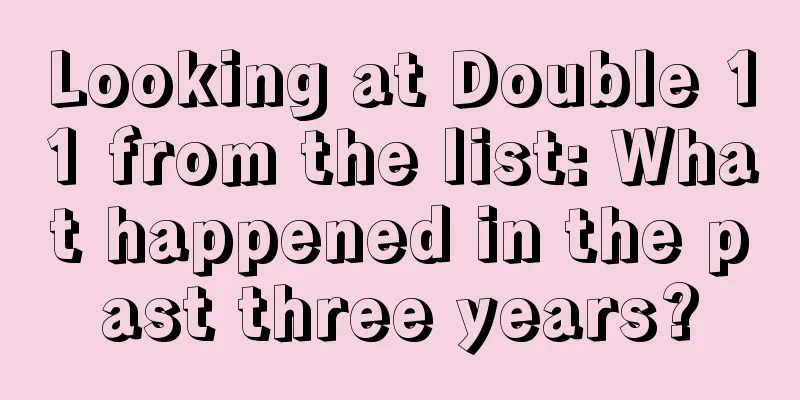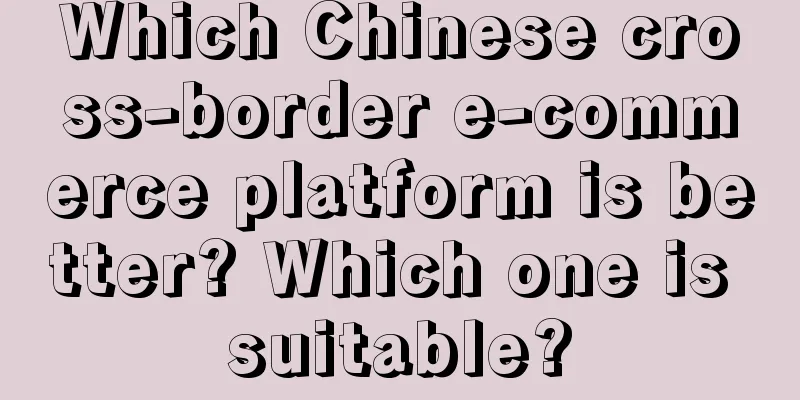At the World Cup, Coca-Cola is "doing wholesale"

As a sponsor of the Qatar World Cup, Budweiser's "status" is completely different from that of Coca-Cola. Budweiser is powerless. Because Qatar has implemented a ban on alcohol, as a beer brand, Budweiser is like being "stabbed in the back" by a wealthy Middle Eastern company. Some media reported that Budweiser plans to ask FIFA for a refund of US$47.4 million to "make up for some of its losses." Coca-Cola went too far. In addition to its iconic "Coca Cola" advertisement, it also displayed its bottled water brand Smartwater, sports drink brand Powerade, tea drink brand Fuzetea, coffee brand Costa, juice brand Minute Maid, etc., all in a row, creating a spectacular sight. Why does Coca-Cola display so many brands? From an official perspective, this move can be seen as a manifestation of its full-category strategy, but from the perspective of consumers and the industry, the more brands are displayed, the more Coca-Cola's anxiety is highlighted. 1. Growth cannot suppress anxietyCoca-Cola's anxiety does not mean that there is a problem with its revenue. At least in the past two years, Coca-Cola is still able to compete. In 2021, Coca-Cola's overall revenue was US$38.66 billion, a year-on-year increase of 17%, exceeding market expectations of US$38.08 billion; operating profit was US$10.31 billion, a year-on-year increase of 15%. According to the financial report of that year, Coca-Cola's global single-box sales increased in every quarter of 2021 compared with 2019 before the epidemic, and the single-box sales in 2021 surpassed 2019 in all aspects. This year, Coca-Cola has continued its development momentum. The financial report released at the end of last month showed that Coca-Cola's third-quarter revenue was US$11.063 billion, a year-on-year increase of 10%, exceeding the market expectation of US$10.5 billion; operating profit was US$3.088 billion, a year-on-year increase of 7%. No matter how you look at it, it is an impressive record and there seems to be no reason to be anxious. However, if you extend the timeline, you will find that Coca-Cola is experiencing its own "crisis." In terms of revenue , Coca-Cola's revenue reached US$48.017 billion in 2012, and has gradually declined since then. In the past two or three years of the epidemic, Coca-Cola's revenue has increased due to factors such as the boost in demand for emotional consumption, but compared with ten years ago, the revenue of 38.66 billion yuan in 2021 is still dwarfed. From the perspective of product categories, the carbonated beverage market, which is the "ballast stone" of Coca-Cola, continues to shrink, and continues to deepen the sense of crisis of this "giant". Data shows that the share of carbonated beverages in the soft drink market has dropped from 36.9% in 2016 to 35.2% in 2020, while the market share of bottled water, sports drinks and other categories has accelerated. Seeing the changes in the market, Coca-Cola vigorously promotes the full category strategy. In other words, it is an all-out attack to explore and enter various categories. For this reason, Coca-Cola not only sells alcohol and "Prunella Vulgaris" herbal tea, but also spends a huge amount of money to acquire sports drink brands. It was even rumored that it would cooperate with a Canadian cannabis producer to develop beverages. Coca-Cola's expansion into all product categories was also fully demonstrated in its advertisements at the World Cup matches, with carbonated drinks, bottled water, sports drinks, tea drinks, coffee, juice, etc. all "on the stage". Coca-Cola puts so many brands on display, of course, because the World Cup has a wide audience and a large amount of traffic, but it is also related to its extreme reliance on advertising. As analyst Zhao Bo wrote: "Advertising is the lifeline of Coca-Cola. Although Coca-Cola has changed owners several times, this strategy of extreme reliance on advertising has not changed." There may be nothing wrong with being "extremely dependent on advertising", but the effectiveness of promoting six brands at the same time in a wholesale manner is indeed questionable. On November 23, the Digital Brand List released the "2022 World Cup Brand Marketing List" (initial list). Nike, Adidas, McDonald's, PepsiCo and Chinese companies Mengniu, Hisense, Yili, vivo, BOSS Direct Recruitment, etc. were all on the list, but Coca-Cola was nowhere to be seen. This list is certainly just one person’s opinion, but it also indirectly illustrates that the result of “wanting both,” “wanting also,” and “wanting all” may be that the attention paid to each brand is weakened. I wonder if such a "result" will deepen Coca-Cola's anxiety? 2. The haze behind all categoriesAt the World Cup, Coca-Cola promoted six brands and six categories at the same time. This is because Coca-Cola has a certain market share in these categories. Take Powerade, which has been exposed at the World Cup, as an example. After Coca-Cola spent $5.6 billion to acquire another sports drink brand, BodyArmor, the two companies gained about 23% of the North American sports drink market. Although this is far from the nearly 70% share of Gatorade under PepsiCo, it also has a market voice that cannot be underestimated. The introduction of brands and categories with a certain market share is the result of Coca-Cola's "internal horse racing". In the words of James Quincey, chairman and CEO of Coca-Cola, they show "market potential for scale." When talking about entering new tracks and laying out all categories, Zhan Kunjie said: "We are not interested in simply getting involved in a certain category. This does not mean much to Coca-Cola's numbers (here refers to revenue, profit, etc.). When we test these new products, we need to have such a perspective: once they are successful, we can scale them up, and this will be related to Coca-Cola; only in this way, we have something worth discussing." The key point is that the road between "testing new products" and "scaled" products is not a smooth one, but rather full of thorns, with a high proportion of "sinking" products. In December 2020, Wang Xingrong, General Manager of Corporate Brand and Public Relations Communications of Coca-Cola Greater China, revealed that Coca-Cola began to implement a category optimization strategy in 2018. " In three years, 700, 600, and 250 brands were eliminated respectively. Currently, there are about 500 brands in the world. " "We hope that innovation will be more effective." Wang Xingrong further said: "In the past, ineffective product innovation was due to being too scattered. It was not enough for the company to use resources on every brand. In the past, many brands of Coca-Cola had a long tail effect, and more than 50% of the brands only accounted for 1% of sales, which did not achieve scale benefits." It makes logical sense to cut off “zombie categories” that “have not achieved economies of scale” and focus resources on more exploration to make innovation more “effective”. However, in actual market practice, innovation is not a “subtraction problem”. Putting aside other things, among the six Coca-Cola brands that appeared in the World Cup, the bottled water brand Smartwater, the coffee brand Costa, and the juice brand Minute Maid all came from external acquisitions rather than internal innovation. For this reason, netizens couldn't help but make fun of it, saying, "Coca-Cola, why don't you stop innovating?", "Coca-Cola has no new story?", "Just sell fat otaku happy water honestly" and other comments came in one after another. In Zhao Bo's view, it is not easy for big brands to succeed in innovation because: "The problem with a company like Coca-Cola is that it is too powerful, its organization is too efficient, and its financial accounting is too sophisticated, so the organization does not allow for mistakes, and the company has a very low tolerance for innovation failures." In addition to the heavy shadow of lack of innovation, another shadow that Coca-Cola faces is that under a strong organization, Coca-Cola uses the 101 channel model to "seamlessly cover most sales points", but the profit margin for channel partners is extremely low . Zhao Bo believes that this is also the "weakness of powerful Coca-Cola", from which competitors can grab "sufficient operating space". In fact, Yuanqi Forest emerged in this "space". The media calculated that in 2018, for every box of Yuanqi Forest sparkling water sold, the distributor could earn 17 yuan and the terminal store owner could earn 27.5 yuan. The generous "profit sharing" helped Yuanqi Forest grow rapidly, and its rapid momentum prompted Coca-Cola to take action to block it, and even threatened to "destroy Yuanqi Forest this year." The result is obvious. Yuanqi Forest was not "defeated", but the haze behind Coca-Cola's full-category strategy remains lingering. 3. Think backwardsThe rise of Yuanqi Forest has put giants such as Coca-Cola under increasing pressure. In the view of the media, facing new rivals, Coca-Cola "needs to continue to communicate with young people." Regarding this point, Lu Xiuqiong, global expert partner of Bain and former vice president of marketing for Coca-Cola China, once said that Coca-Cola needs to "think in reverse": who are the consumers, what kind of emotional resonance the brand wants to generate when communicating with them, and what different things should be done at different stages . "Only when this part is clearly thought out can a decision be made." This is actually another way of expressing respect for consumer sovereignty. From a brand perspective, Coca-Cola has a wide distribution channel and can quickly develop consumer insights, but it is not easy to achieve emotional resonance with consumers. The most obvious example is that before Yuanqi Forest ignited the "sugar-free" track, Coca-Cola launched the sugar-free version of "Coke Zero" as early as 2005, but it failed to become popular and was even selected by netizens as one of the "Top Ten Most Unpalatable Drinks in the World". An industry insider familiar with Coca-Cola revealed that Coca-Cola at that time "simply replaced white sugar with sugar substitutes, and did not carefully consider the taste." As a "latecomer", Yuanqi Forest has seasonal and special flavors in addition to regular flavors, attracting consumers to check in and spread the word, which resonates with more people. However, after the "sugar-free" track became popular, Coca-Cola also reaped the benefits. The Coca-Cola Company's 2022 third-quarter report showed that global single-box sales of Coca-Cola Sugar Free increased by 11%; data released by Meituan recently also showed that from January to October this year, the takeaway sales of Coca-Cola Sugar Free increased by 132% year-on-year, far higher than the average growth rate of Coca-Cola products on the platform. Among these takeaway orders, orders from 8 p.m. to 3 a.m. accounted for 29%, and night orders for Coca-Cola Sugar Free accounted for as much as 40%. The above-mentioned real data show that consumers want both refreshment and health, and sugar-free Coca-Cola meets this demand, so it has reaped the benefits. Furthermore, making consumers fall in love with carbonated beverages again needs to be given equal importance as the expansion and layout of all product categories such as bottled water, sports drinks, tea drinks, coffee, and juice. This is not difficult to understand. Coca-Cola's "ballast stone" and "main battlefield" are still carbonated beverages. Only when this field is stabilized can Coca-Cola alleviate its anxiety and obtain more resources to promote the layout of all product categories. Of course, the premise of all this is to always meet the needs of consumers - Coca-Cola's "battlefield" is not at the World Cup, but in our daily lives. Author: Bandits Source: WeChat public account "New Retail Business Review (ID: xinlingshou1001)" |
Recommend
What is Amazon Alexa? Can Amazon Alexa be used in China?
Now Alexa is more than just a simple voice assista...
Why is Amazon slow to pay back? What is the reason for payment delay?
Many people like to shop on Amazon. The most impor...
10 Marketing Trends for 2025
As 2024 draws to a close, we stand on the threshol...
The Luck and Embarrassment of the “Second Generation of Anchors”
With the rapid development of the live broadcast e...
Returning to the people-oriented approach, how can Mother’s Day marketing achieve the goal of breaking down first and then building up?
This article explores how brands can break the tra...
iQiyi, Youku and Tencent Video’s 618 promotion, are Apple users out of the game?
This article delves into the embarrassing situatio...
An inventory of Xiaohongshu's marketing methodologies over the years! Are these methods really useful?
This article reviews Xiaohongshu's marketing m...
What does Wishgo do? Is Wishgo an online store?
Wishgo is a company that focuses on cross-border e...
A large company: 5 golden rules for user analysis
I wonder if you have ever felt confused: when doin...
How to choose a career direction?
When our career development reaches a certain bott...
A cup of sauce-flavored latte costs 100 million yuan, who is the big winner between Luckin Coffee and Moutai?
The joint venture of Jiangxiang Latte and Luckin M...
What is a good Amazon rating? Are ratings important?
When buying products on Amazon, the biggest fear i...
What is the reason for the good sales of Shopee? How to make Shopee?
The sales of Shopee website are good, which is an ...
Digging into 3,000+ data from 15 categories in the 3.8 promotion, who is growing?
This year's 3.8 promotion has passed, but the ...
Charlie Munger: The 30 most important thinking models, thought-provoking, recommended for collection!
The author of this article has selected 30 of Char...









